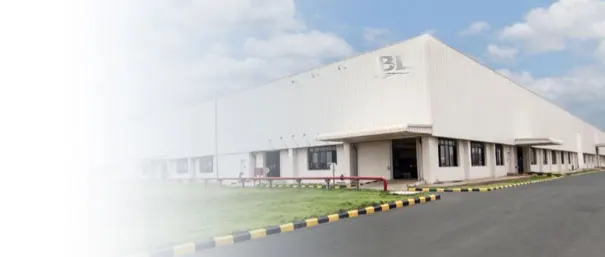ASTM 440C Stainless Steel: High-Carbon Martensitic Grade for Extreme Wear Resistance & Hardness
ASTM 440C stainless steel (UNS S44004) is a high-carbon martensitic alloy renowned for its exceptional hardness, wear resistance, and moderate corrosion resistance. With a carbon content of 0.95-1.20%, it achieves the highest hardness among standard stainless steels (up to 60 HRC) after heat treatment, making it ideal for bearing applications, surgical instruments, and high-wear components. This article explores its chemical composition, mechanical properties, heat treatment processes, and specialized applications where abrasion resistance is critical.
1. Chemical Composition (ASTM A276/A479 Standard)
| Element | Content Range | Function |
|---|---|---|
| Carbon (C) | 0.95 – 1.20% | Primary hardening element; increases wear resistance and achievable hardness |
| Chromium (Cr) | 16.00 – 18.00% | Provides corrosion resistance and forms hard chromium carbides (Cr₂₃C₆) |
| Manganese (Mn) | ≤ 1.00% | Deoxidizer; improves hot workability and hardness penetration |
| Silicon (Si) | ≤ 1.00% | Enhances strength and oxidation resistance at elevated temperatures |
| Molybdenum (Mo) | 0.75% max | Optional addition to improve pitting resistance in chloride environments |
| Phosphorus (P) | ≤ 0.040% | Impurity; minimized to prevent embrittlement |
| Sulfur (S) | ≤ 0.030% | Impurity; controlled to avoid hot shortness during forging |
2. Mechanical Properties (After Heat Treatment)
- Hardness (HRC): 58-60 (after quenching and tempering; highest among standard stainless grades)
- Tensile Strength (σb): ≥ 1900 MPa (275 ksi) in fully hardened condition
- Yield Strength (σ0.2): ≥ 1700 MPa (247 ksi) when properly heat-treated
- Elongation (δ): ≥ 2% (limited ductility due to high carbon content)
- Impact Toughness: Low (not suitable for shock loading; Charpy V-notch typically < 10 J)
- Maximum Service Temperature: 425°C (800°F) for continuous use (reduced hardness above this)
3. Heat Treatment Process
- Annealing: Heat to 840-900°C (1544-1652°F), slow cool in furnace to ≤ 30°C/hour to soften for machining (hardness ≤ 26 HRC). Microstructure: spheroidized carbides in ferrite matrix.
- Hardening (Quenching): Austenitize at 1010-1065°C (1850-1950°F), oil or air quench to room temperature. Achieves martensitic transformation with retained austenite (~10-15%).
- Tempering: Single or double temper at 150-370°C (300-700°F) to reduce brittleness while maintaining hardness. Typical cycle: 2 hours at 175°C (350°F) for 58-60 HRC.
- Cryogenic Treatment: Optional -80°C (-112°F) soak post-quench to transform retained austenite, increasing dimensional stability and hardness by 1-2 HRC.
- Stress Relieving: For machined components, 1-2 hours at 150-200°C (300-390°F) to minimize distortion risks.
4. Key Application Fields
Bearing & Mechanical Components
Ball bearings, roller bearings, and raceways for aerospace, automotive, and industrial machinery where high load capacity and wear resistance are critical. Often used in ABEC-7/9 precision bearings.
Medical & Dental Instruments
Surgical blades, scalpels, dental drills, and orthopedic tools requiring razor-sharp edges and sterilization compatibility. Meets ISO 7153-1 and ASTM F899 standards for surgical instruments.
Valves & Pump Parts
Valve seats, stems, and pump shafts in abrasive slurries (e.g., mining, oilfield) where galling resistance is essential. Often paired with Stellite® overlays for extreme conditions.
Cutting Tools & Molds
Knife blades, shear blades, plastic injection molds, and woodworking tools. Retains edge sharpness 5-10x longer than 420-series steels in high-volume production.
5. Comparison with Other Martensitic Grades
| Grade | Carbon Content | Hardness (HRC) | Key Advantages | Typical Applications |
|---|---|---|---|---|
| 440C | 0.95-1.20% | 58-60 | Highest hardness; superior wear resistance | Bearings, surgical tools, valve parts |
| 440B | 0.75-0.95% | 56-58 | Balance of hardness and toughness | Cutlery, mid-load bearings |
| 440A | 0.60-0.75% | 54-56 | Better machinability; lower cost | General-purpose knives, fasteners |
| 420 | 0.15% min | 50-52 | Improved corrosion resistance | Marine hardware, decorative blades |
6. Selection & Processing Guidelines
- Machinability: Best in annealed condition (≤ 26 HRC); use carbide tools with positive rake angles. Avoid high-speed steel tools due to work hardening.
- Welding: Not recommended; high carbon content causes cracking. If required, preheat to 200-300°C (400-570°F) and use 410NiMo filler, followed by PWHT.
- Corrosion Resistance: Inferior to austenitic grades (e.g., 304/316). Requires oil coating or nitrogen packaging for storage to prevent rust. Avoid prolonged exposure to chlorides or acids.
- Surface Finishes: Ground or polished surfaces (Ra ≤ 0.4 μm) essential for bearing applications to minimize friction. Electropolishing improves corrosion resistance slightly.
- Quality Certification: Verify heat treatment curves and hardness testing reports (per ASTM A370). Request material test reports (MTRs) confirming carbon content and freedom from delta ferrite.
7. Request a Quote for ASTM 440C Stainless Steel
Need precision-ground 440C bars, custom heat-treated components, or bearing-quality rounds? Our metallurgical experts provide tailored solutions for high-wear applications. Contact us with your specifications (dimensions, hardness requirements, quantity) for competitive pricing and lead times.


